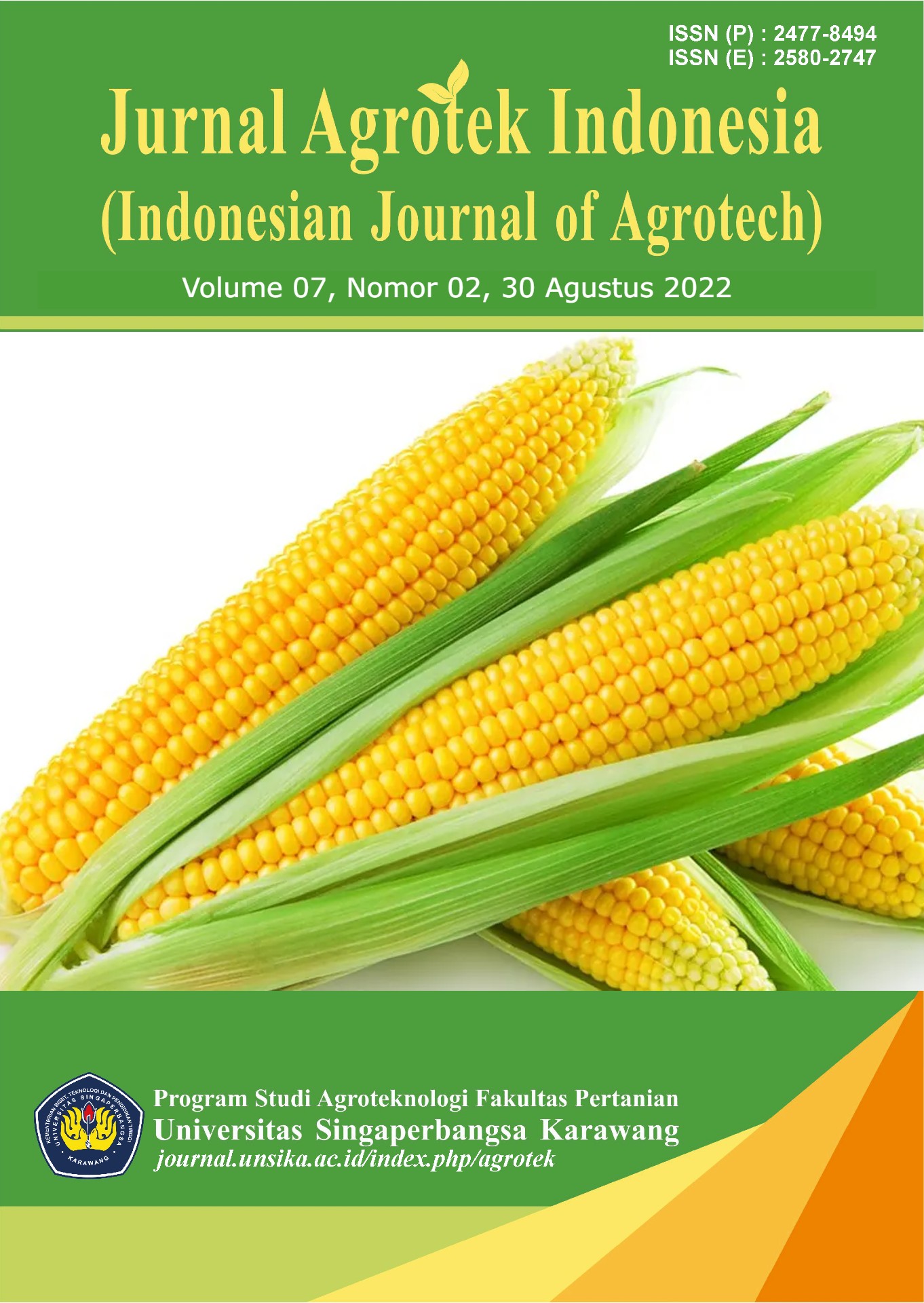The Effectiveness of Glyphosate Herbicide With The Addition Of Surfactants To Control Weeds in Palm Oil Fields (Elaeis quineensis Jacq)
Abstract
The purpose of this study was to determine the effectiveness of the herbicide dose level with the active ingredient glyphosate with the addition of 4 types of surfactants to control weeds in oil palm fields. The study used a separate plot design method with a randomized block trial pattern, testing the herbicide dose levels of 2, 3 and 4 liters of herbicide glyphosate/ha (as the main plot) and the addition of surfactant types (as subplots). The types of surfactants tested were Biosurfactant DEA, Biosurfactant DEA-3, Agristic (commercial surfactant) and Spreader (commercial surfactant) with a concentration of 0.5 ml/liter of herbicide solution. From the analysis of research data, it is known that the dose levels of 2, 3 and 4 liters per hectare of the herbicide glyphosate with the addition of 4 types of surfactants, did not show significantly different effectiveness in controlling weeds in oil palm plantation areas. The addition of DEA Biosurfactant, DEA-3 Biosurfactant, Agricultural Surfactant and Spreader Surfactant into the glyphosate herbicide solution did not significantly increase the effectiveness of the herbicide to control weeds in oil palm plantations. The herbicide glyphosate with the addition of 4 types of surfactants was effective in controlling Asystasia gangetica and Cyrtococcum oxyphillum weeds, but was not effective in suppressing the growth and development of Syngonium podophyllum and Adiantum latifolium weeds.
Keywords: herbicide, glyphosate, weed, surfactant
Downloads
Downloads
Published
How to Cite
Issue
Section
License

This work is licensed under a Creative Commons Attribution-ShareAlike 4.0 International License.









